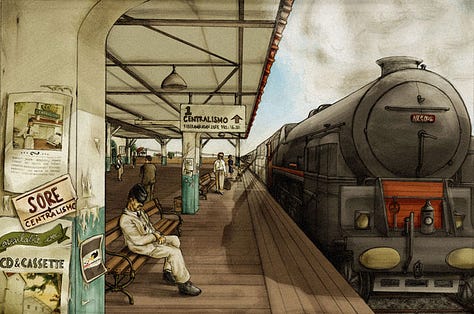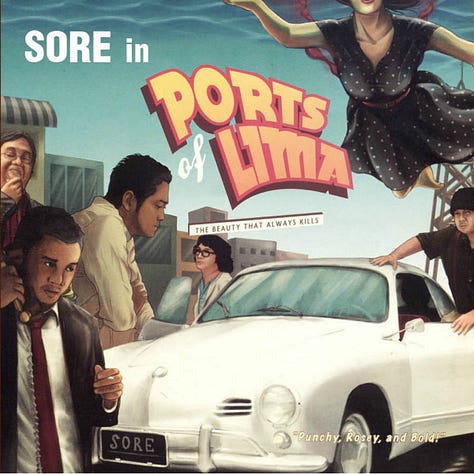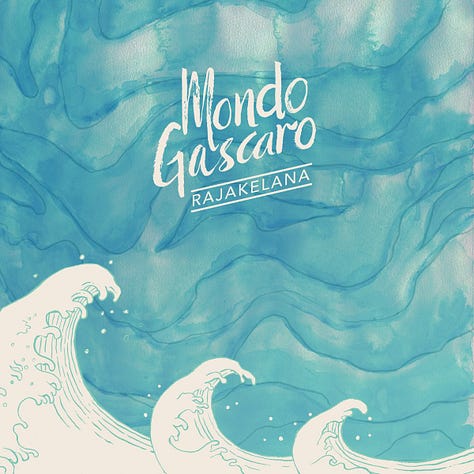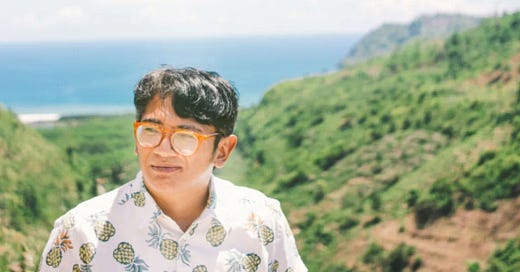Interviewing Mondo Gascaro
I love Japanese cinema and personally admire the works of Akira Kurosawa, Yasujirō Ozu, and Takeshi Kitano. I think their works are like paintings, and they balanced space and objects very well.
He may be under the radar in Indonesia’s mainstream music scene. He learned how to play the keyboard on a paper keyboard, imagining the music in his head, but his works have garnered him prestigious accolades, including “Five Asian Albums Worth Buying” by Time in 2005 and “Album of the Year 2008” by Rolling Stone Indonesia with his former band Sore, “2nd Best Album 2016” by Rolling Stone Indonesia, “Album of the Year 2016” by Tempo, and “Album of the Year 2016” by MetroTV for his latest solo album Rajakelana. A humble and soft-spoken person, Mondo Gascaro sat down at Seasalt’s Living Room to talk about music over a cup of coffee and a bowl of Bonitonara.
Tell us about your working method. How do you proceed with each song from the writing sketch to the final product?
In many cases, I would start with chords, create guidelines through MIDI, and bring them to the studio to record the demo track by track. But in my first album, maybe because I worked over a long period of time and in between my other projects, I didn’t have any specific method. Each song begins from various starting points and has its own needs with regards to arrangements and instrumentation. In Into the Cloud, out of the Ocean, I knew I wanted to have a saxophone part without even having the whole song completed up to that point, so I recorded that part with Jay (the saxophonist) first and completed the song months later. In Naked, I worked on the bossa-nova inspired rhythm first before continuing with the other parts. Sometimes I knew how the whole song would sound from the beginning, like Lamun Ombak and I knew it would be sung by a woman.
Speaking of your Japanese descent, is there any significant Japanese influence that inspires your daily life and, of course, your music production?
There is. For Rajakelana I took much inspiration from 70s and 80s Japanese pop music, which itself was influenced by The Beach Boys. But to be honest, Japanese cinema influenced me more than Japanese music. I love Japanese cinema and personally admire the works of Akira Kurosawa, Yasujirō Ozu, and Takeshi Kitano. I think their works are like paintings, and they balanced space and objects very well.
You are very well-known for having complex, intricate, and detailed music arrangements. How do you bring your studio arrangements to live performances or touring?
*laugh* that’s always been my biggest challenge since I was still part of Sore. Basically, modern music has always maximised the use of recording technology, so it’s always a challenge regardless of what genre you are performing, unless you are doing electronic music. What I did was to re-arrange the song for live performance with limited instrumentation while keeping its essence clear — my guitarist is not only playing his guitar part but I encouraged him to explore new sounds to cover, let’s say, the saxophone part. So far, that trick is working well and our live performance keeps getting better. Ideally our band should consist of six to seven people, though *laugh*.
Do you think your complex arrangement is your signature style? Is there any reason behind it?
I would say it’s my preference, or maybe I subconsciously has the need to do that *laugh*. My thinking process is always orchestral; when I listen to music, I will capture every instrument part; brass, strings, woodwind, percussion. When I’m thinking about guitar, I might write some guitar parts that are totally different to each other. I have never intended my arrangement to be complex, but, yes, when I implement this to my band it’s indeed a painstaking process.
What is your favourite music album and why?
Too many to sort through *sipping coffee*. This is important *pointing at his coffee*. It’s a tough question. I would not say favourite but perhaps influential, something that I listen to over and over again. The first one is Sgt. Pepper’s Lonely Hearts Club Band by The Beatles. And the soundtrack of Badai Pasti Berlalu. And there is one more, I forgot the title. It’s a collective jazz project from the 50s. I think it’s called Birth of the Stream (referring to The Birth of the Third Stream). It involved a collective of jazz musicians performing some classic and avant garde-infused jazz pieces. Jazz legends Bill Evans, Charles Mingus, J. J. Johnson, and Gunther Schuller were part of the project. Aah, and *(Apostrophe) by Frank Zappa!
Your first solo album, Rajakelana, was released last year. You mentioned that the album is “an expression of life celebration”, while another article on the internet said that Rajakelana tells a story about “hijrah”. Can you tell us more about this?
It’s a journey. Journey from the past to the present. And it’s a long journey beginning with my departure from Sore, working for various projects for fellow musicians and film scoring, until I started working on my first album with friends and Sarah (Mondo’s wife). It took 1,5 years to complete (the album) but I started writing the material in 2011. Working solo is not easy. I was worried about music distribution, financing, time management, and instrumentation. Along the way, I met many people who unexpectedly helped me to complete this album. My old friend Bayu (bass player) in Yogyakarta suddenly WhatsApp me saying he wanted to come to my house. We recorded many bass parts spontaneously in my house.
The album itself is inspired by the actual roadtrips and vacations me, Sarah, and our friends took in the past. We spent new year’s eve in Kediri, East Java. We went to a beach in Tulungagung and Yogjakarta, to the old town of Surabaya. We took photos and video footage just for fun. We had a good time. Some footage we took ended up in the Naked music video. Many moments that happened during the vacation also inspired me to write songs. Maybe that’s how the album naturally earned its tropical and travelling vibe. I bet it would have sounded totally different if I had worked on it in Jakarta.
What do you think and feel about many positive feedback and accolades for your first solo album Rajakelana?
Thank God. I’m happy to finally release it after a very long process. I didn’t expect to receive such positive praise from the media and, most importantly, fans. I’m also thankful to our record label partner in Japan, Dessinee, who helped release my album there with special Japanese-style packaging. And Japanese prices too *laugh*.
All visual artworks related to your projects, including with Sore in the past, are very particular and are an inseparable part of your music. How did you do it?
Maybe because it’s Mayumi (Mayumi Haryoto, Mondo’s younger sister). She knows all the musical processes I have taken since I started my career with Sore. She knows how I write my songs, how I arrange them, and what the direction is. She knows best how to visualise my works. She works alongside us (Sore) or me while we are finishing the music, meaning that the artwork is always closely connected to the music, and reflects the themes and ideas that come up as the albums are made.



Did you actively involve yourself in that visual process?
Yes. And that is what makes the difference (between me and other musicians). Also in the music video. I wrote the script for Lihat (Sore’s song). But even though I’m not directly involved, part of me will always be in the videos, like in Naked and A Deacon’s Summer. A Deacon’s Summer was Sarah’s idea of having me walking around the location where I grew up in; Cikini, Senen, like The Beatles’ Penny Lane.
It was shot by Omar (photographer). He was like the unofficial photographer of Sore. He started his hobby doing photography by taking photo documentaries for Sore back then. He was in senior high school. He wouldn’t be like he is now without Sore, he said to me. Maybe because he’s a close friend of mine, so he can capture all the relevant footage, as I mentioned earlier. I’m so thankful to have my friends around me. Who unexpectedly met but eventually played a big part in my life and career.
What is your current project?
Um. I’m still promoting my album and have been in this RTS (Road to Soundrenaline) for a month, from Jakarta, Medan, and now in Bali. I’m into some projects that I cannot share with you now *laugh*. It’s a producing-role project.
Have you had thoughts about your next album and if so, what should we expect? Would you make another film score or develop a film-like concept album with a storyline?
I have some songs to work on for my next album but I’m not sure about the concept or direction yet. Ports of Lima was recorded as companion to a fictional film in mind. There are fictional characters and scripts there, a very surrealist one *laugh*. But I would prefer to work with a reputable writer I suppose. I don’t know. For me, music is a journey. Music is how we see and experience life through the perspective of hearing. So, let’s see.




